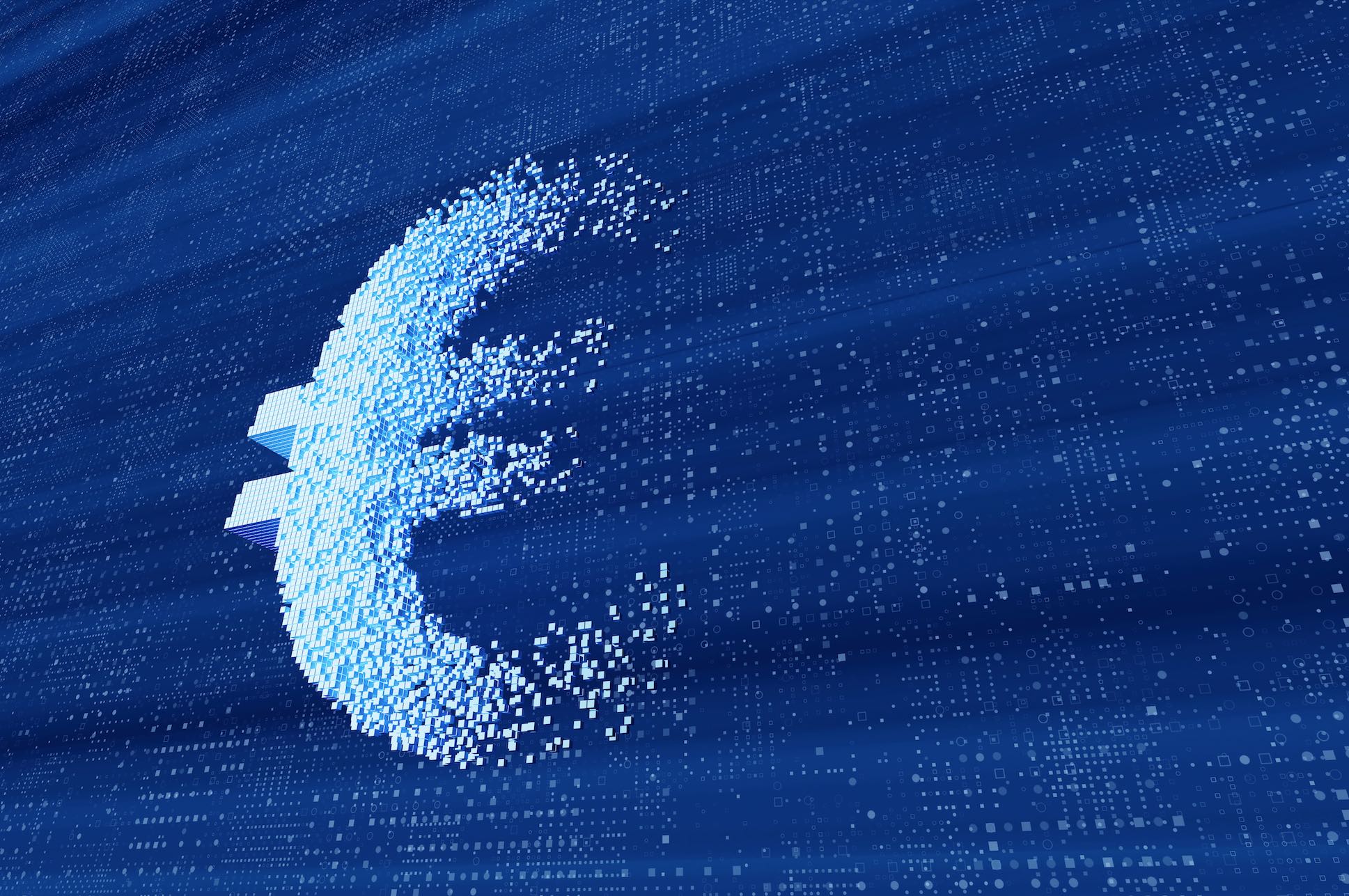What is tokenisation?
A true innovation in the world of finance, tokenisation is opening up new opportunities in the field of investment. What does it involve? What is it used for and what should you be aware of? myLIFE has some pointers.
What do we mean by ‘tokenisation’?
To understand what tokenisation is, we should first revisit some basic concepts. A token is a digital representation of a digital or physical asset (an asset, a right or property, etc.) which is registered in a blockchain and can be traded.
Useful info: a blockchain is a type of network database that makes it possible to store and transfer information transparently and securely without relying on a centralised monitoring body. See: Understanding the Blockchain.
Tokenisation is a process consisting of (…) representing a real asset in the digital world.
Tokenisation is the process of registering an asset (or part of that asset) and the associated rights on a token. In other words, it is a way of representing a real asset in the digital word.
There are several categories of token: native tokens, utility tokens and security tokens, etc. Each category has its own features and awards specific rights. Some tokens are used as a means of payment or storing value in the context of cryptocurrency ; others, such as utility tokens, are linked to a specific use (allowing access to benefits, specific services, etc.). Others represent a financial asset or a security or are to be used as security tokens. NB: the legislation applied differs depending on the type of token!
Tokenisation entails the use of smart contracts stored on a blockchain (such as Ethereum). These computer programs define the conditions for creating and trading tokens, but can also automatically perform predefined actions when certain criteria are met. It is a kind of computer version of a paper contract that cannot be modified and that runs autonomously without human intervention.
Tokenisation (…) allows an asset to be divided into many smaller parts. Investors can therefore choose to buy only a fraction of the asset if they want to.
When can we use tokenisation?
Let’s look at a few examples of how tokenisation can be used in the real world.
In real estate
Tokenisation can take various forms on the property market. It can, for example, be used to represent, in the form of a token, a security entitling the holder to all or part of the ownership of real estate or to a share of a property investment company (Société Civile Immobilière – SCI). In this example, instead of the property asset itself being tokenised, the securities of the company that owns it are.
One special feature of tokenisation is that it allows an asset to be divided into many smaller parts. Investors can therefore choose to buy only a fraction of the asset if they want to.
Let’s imagine the case of a property valued at EUR 1 million. The company issues 1,000 tokens, each with a value of EUR 1,000 giving the right to collect a percentage of the rental income generated by the property.
Tokenisation would mean that investment in the property could be made from anywhere in the world with reduced starting capital and investors could receive any income generated by the property. It would make it possible to streamline and speed up the purchases and sale process (tokens are exchanged rather than the property itself) and to reduce costs (fewer intermediaries), while benefiting from the transparency and security of trades using blockchain technology. In addition, all the checks related to the transaction would be done by a smart contract and the rental income would be distributed automatically among the token owners.
NB: in practice, there are a number of obstacles to real estate tokenisation. Real estate tokens do not represent the same rights in all countries. They are recognised differently depending on the legislation. For example, in several countries, the ownership of a real estate asset must be registered in an official land register to be recognised and no property transfers are permitted outside of this register. Therefore, the registration of a token representing the ownership of a property on a blockchain will not be legally recognised everywhere. This is certainly enough to put some off.
Tokenisation can offer an alternative to traditional financing systems.
In business
For businesses, tokenisation can offer an alternative to traditional financing systems. It can be used in several situations: fundraising, pre-sale of products or access to specific client benefits.
During a company’s start-up phase, for example, the company could decide to sell tokens enabling special access to its products or services as soon as they are brought to market. Just as in crowdfunding, the company would benefit from capital to develop its project while generating interest in its activity. In addition, the blockchain would allow it to take advantage of faster and smoother transactions.
The company could also tokenise advantages specific to its activity (loyalty points, vouchers, VIP access, etc.) in order to finance a project. Buyers would also be able to speculate on the value of the tokens by trading them for cryptocurrency.
| ICO: tokens entitling the holder to specific advantages or services (utility tokens) are issued as part of an Initial Coin Offering (ICO) or offer of tokens to the public. It is a fundraising method for creating and trading tokens in return for cryptocurrency. |
NB: there is no guarantee as to the success of the project pursued by the company. In the event of failure, the capital invested is lost and the tokens acquired will have no value. In addition, there is no guarantee to the buyer that there will be a market on which to trade their tokens. Where there is insufficient demand, it may not be possible to sell them, or they may have to be sold on highly unfavourable terms.
The tokenisation of financial instruments
Tokenisation can also be considered, for example, in order to link a financial instrument (shares of a company, bonds, shares of investment funds, etc.) to a token registered on the blockchain.

An entrepreneur could decide to tokenise shares in their company or part of their shares in order to raise funds. This process would not only enable them to split their shares to make them more financially accessible, but also to access an international market that is open and accessible 24 hours a day. It could also define the rights granted by the token, thanks to the smart contract, which specifies both the conditions for the transfer of the tokens, the methods of payment of the dividends, and the existence or not of voting rights for buyers, etc.
In addition, smart contracts could automate mandatory legal and regulatory checks to ensure transaction compliance.
In the case of financial instrument tokenisation, the investor becomes the owner of tokens representing shares of the company and the rights attached to them.
| STO: tokens representing a company share are issued as part of an Security Token Offering (STO). Unlike ICOs, rather than issuing utility tokens and exchanging them for cryptocurrency, tokens representing a financial asset, a security or even a product intended for speculation are issued. STOs are strictly regulated and they can only be sold to “compliant” and “approved” entities. |
NB: the framework for trading this type of token makes transactions more complex and inflexible. In addition, investors are not immune to security risks related to holding tokens (computer hacking, loss or theft of data, etc.).
The tokenisation of alternative products
Other products can also be tokenised: luxury items, collectors’ items, precious metals, etc. Digitising and splitting these asset types would make them more accessible and easier to trade. In theory, a token is easier to sell on a trading platform than a masterpiece is on the art market.
Using this method, new communities of investors could acquire small amounts of gold and trade them on a blockchain using tokens. The art market could also become more accessible to a wider audience. However, we tend to talk about NFTs (non-fungible tokens) in this context, especially when the token represents a unique and non-interchangeable asset. More information about NFTs.
N.B.: this type of transaction is often the target of fraud or hacking: phishing, fake platforms, data theft, NFT counterfeiting or plagiarism, etc. Although the blockchain transaction is secure, investors must still check what they are buying and check that the trading platform can be trusted.
As we can see, the scope of tokenisation thus encompasses a wide range of asset types: real estate, equities, commodities, wine, patents, copyrights and even sporting memorabilia. However, despite the innovation it can offer, it still faces many obstacles and uncertainties.
There is still some way to go before all these assets are regulated by a specific legal framework.
A process that still presents many risks
Tokenisation is still a relatively recent phenomenon. Beyond questions related to transaction volume, which remains limited for certain asset types (calling into question their liquidity), there are still some grey areas, particularly when it comes to regulation.
Not all tokens have the same functions or the same characteristics, resulting in different treatment by legislators depending on their type. In addition, approaches to digital assets vary by country, and regulators do not all apply the same guidelines. In the Grand Duchy, the Luxembourg Financial Supervisory Authority (Commission de Surveillance du Secteur Financier – CSSF) establishes the financial rules.
Regulation must be adapted for each token type, without undermining existing laws to protect investors and ensure financial stability. In this area, the legal framework is constantly changing. Moreover, the European Union is currently developing a regulation aimed at harmonising digital asset markets, the Markets in Crypto-Assets However, there is still some way to go before all these assets are regulated by a specific legal framework and before international coordination is achieved allowing them to seek redress in the event of a dispute.
Furthermore, regardless of the risk inherent in any investment, activities involving virtual assets expose investors to specific dangers, such as volatility, computer hacking, programming errors affecting smart contracts, or even association with criminal activities (money laundering, terrorist financing, etc.).
Even more than for traditional investments, it is important to take the time to become familiar with this type of digital asset and to learn about the applicable legislation. This form of investment is reserved for well-informed investors. Faced with the substantial risks that remain, many banks are currently making the conscious choice not to participate in this innovation.
This article aims to popularise tokenisation and is merely an introduction to the basic concepts. To find out more, please visit specialised websites, such as blockchainfrance.net or cryptoast.fr.
Many thanks to Wesley Deglise, tokenisation expert and managing director of AOI for his contribution to this article.


 Mortgage
Mortgage Personal loan
Personal loan Savings
Savings